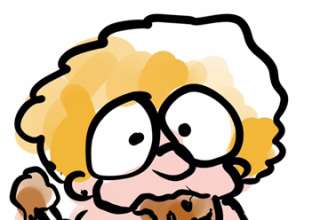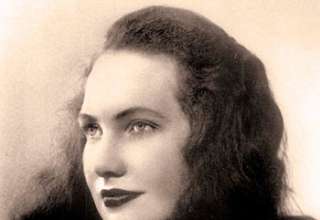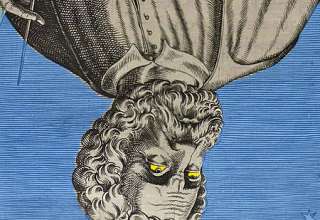Mark Twain’s “A Letter From Santa Claus”
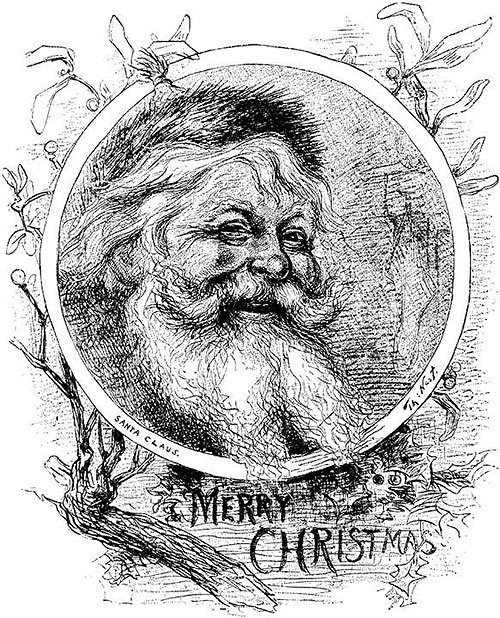 In 1875, Mark Twain wrote a letter to his daughter Susie, who was 3 years old at the time, which he signed “Your loving Santa Claus.” You can read it in its entirety below, but first a little bit of pretext. Twain was very close to his daughter, all the way up to her untimely death at age 24 in 1896, and that year she had written her first letter to Santa Claus. Twain, being a writer, couldn’t stand for his young daughter to feel like her work went unheard, so he decided to pen the following letter to “My Dear Susie Clemens” from “The Man in the Moon” himself.
In 1875, Mark Twain wrote a letter to his daughter Susie, who was 3 years old at the time, which he signed “Your loving Santa Claus.” You can read it in its entirety below, but first a little bit of pretext. Twain was very close to his daughter, all the way up to her untimely death at age 24 in 1896, and that year she had written her first letter to Santa Claus. Twain, being a writer, couldn’t stand for his young daughter to feel like her work went unheard, so he decided to pen the following letter to “My Dear Susie Clemens” from “The Man in the Moon” himself.
“A Letter From Santa Claus” by Mark Twain
My Dear Susie Clemens,
I have received and read all the letters which you and your little sister have written me…I can read your and your baby sister’s jagged and fantastic marks without any trouble at all. But I had trouble with those letters which you dictated through your mother and the nurses, for I am a foreigner and cannot read English writing well. You will find that I made no mistakes about the things which you and the baby ordered in your own letters — I went down your chimney at midnight when you were asleep and delivered them all myself — and kissed both of you, too…But…there were…one or two small orders which I could not fill because we ran out of stock…
There was a word or two in your mama’s letter which…I took to be “a trunk full of doll’s clothes.” Is that it? I will call at your kitchen door about nine o’clock this morning to inquire. But I must not see anybody and I must not speak to anybody but you. When the kitchen doorbell rings, George must be blindfolded and sent to the door.
You must tell George he must walk on tiptoe and not speak — otherwise he will die someday. Then you must go up to the nursery and stand on a chair or the nurse’s bed and put your ear to the speaking tube that leads down to the kitchen and when I whistle through it you must speak in the tube and say, “Welcome, Santa Claus!” Then I will ask whether it was a trunk you ordered or not. If you say it was, I shall ask you what color you want the trunk to be…and then you must tell me every single thing in detail which you want the trunk to contain. Then when I say “Good-by and a merry Christmas to my little Susy Clemens,” you must say “Good-by, good old Santa Claus, I thank you very much.” Then you must go down into the library and make George close all the doors that open into the main hall, and everybody must keep still for a little while. I will go to the moon and get those things and in a few minutes I will come down the chimney that belongs to the fireplace that is in the hall — if it is a trunk you want–because I couldn’t get such a thing as a trunk down the nursery chimney, you know…If I should leave any snow in the hall, you must tell George to sweep it into the fireplace, for I haven’t time to do such things.
George must not use a broom, but a rag — else he will die someday…If my boot should leave a stain on the marble, George must not holystone it away. Leave it there always in memory of my visit; and whenever you look at it or show it to anybody you must let it remind you to be a good little girl. Whenever you are naughty and someone points to that mark which your good old Santa Claus’s boot made on the marble, what will you say, little sweetheart?
Good-by for a few minutes, till I come down to the world and ring the kitchen doorbell.
Your loving Santa Claus
Whom people sometimes call
“The Man in the Moon”
He’s Back: Adam Sandler — “The Chanukah Song, Part 4”
I did a show with some friends in San Diego and recorded a new one for you.
Have a great holiday season.
How the Wrong Holiday Gift Traumatized Me as a Transgender Child
The middle of winter has long been a time of celebration around the world. Centuries before the arrival of the man called Jesus, early Europeans celebrated light and birth in the darkest days of winter. Many people rejoiced during the winter solstice, when the worst of the winter was behind them and they could look forward to longer days and extended hours of sunlight.

Giving the perfect gift can be stressful for anyone during the holidays. Regardless of your religion, if you do participate in the tradition of giving gifts, there are children who want to receive toys based on their preferred gender identity — not necessarily the one they were assigned at birth. Throughout my 24 years of wish lists, I have always wanted more feminine presents, and I know the importance of receiving a gift that will bring pure joy.
True story: I asked for a Cinderella dress and a Barbie at the age of two. When I was around four, my grandparents sought advice from a psychologist about me asking for female-targeted toys. The psychologist recommended enforcing “boy toys,” like cars and action figures. On Hanukkah I unwrapped presents with my family, including my brother and twin cousins (a girl and boy only five months older than I) at my grandparents’ home.
To my dismay, I got a Batman toy, the same as my male cousin, while my female cousin got a baby doll. Upon unwrapping it, I immediately said, “I didn’t want that.” My grandma looked up at my mom and repeated what I had just said. My mother, who had asked my grandparents not to listen to the psychologist’s advice and reiterated that I wanted a Barbie, said, “Corey, that’s not polite—you just say thank you and we’ll take it to the store and get another one. Why don’t you say thank you anyway.” As you can see in the video below, I started tugging at the vest I was wearing in frustration (subconsciously trying to strip myself of my male exterior), and asked my cousin to play with her new doll.
There’s a debate over how to raise a child who has transgender tendencies, and whether or not to allow that child to choose their own gender. Some parents believe the gender assigned at birth should indicate the type of toys their child should play with. Other parents, like my mom, believe in allowing their children to grow into themselves on their own. My brother and I are prime examples proving that children should be allowed to express themselves freely at any age. My brother, who played with cabbage patch dolls when he was very little, grew into a cisgender man, and I stayed on my path of femininity.
I watched a fascinating BBC documentary called “Transgender Kids: Who Knows Best?” showcasing both points of view. I’ve preached that transgender people have always been a part of human society, which Cheri DiNovo, member of the Provincial Parliament in Ontario, confirms. In the video, Dr. Norman Spack of Boston Children’s Hospital explains, “The variance in gender identity and expression are not psychiatric differences, they are differences in the human condition.”
Presents can create crucial memories and shape how that child views themselves and the world. If you or someone you know is struggling with what to give a transgender child, please remember that unwrapping presents can create crucial memories for children and shape how that child views themselves and the world around them. It’s extremely important to bring joy to any child through a present they truly desire.
The recipient’s happiness should come before anything else when considering a gift. If you’re unsure of what to get, consider books or gender-neutral toys. Through self-discovery, some children will go through different interest phases (like my brother), and some, like me, will continue to break gender binaries.
MOREThe Story of Chanukah (Hannukah)
Courtesy Chabad.org
Under Syrian Rule
More than 2000 years ago there was a time when the land of Israel was part of the Syrian-Greek Empire, dominated by Syrian rulers of the dynasty of the Seleucids.
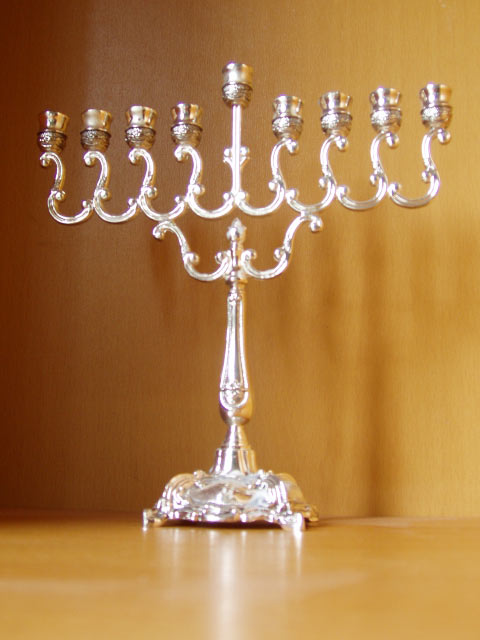
In order to relate the story that led up to Chanukah, we shall start with Antiochus III, the King of Syria, who reigned from 3538 to 3574 (222-186 B.C.E.). He had waged war with King Ptolemy of Egypt over the possession of the Land of Israel. Antiochus III was victorious and the Land of Israel was annexed to his empire. At the beginning of his reign he was favorably disposed toward the Jews and accorded them some privileges.
Later on, however, when he was beaten by the Romans and compelled to pay heavy taxes, the burden fell upon the various peoples of his empire who were forced to furnish the heavy gold that was required of him by the Romans. When Antiochus died, his son Seleucus IV took over, and further oppressed the Jews.
Added to the troubles from the outside were the grave perils that threatened Judaism from within. The influence of the Hellenists (people who accepted idol-worship and the Syrian way of life) was increasing. Yochanan, the High Priest, foresaw the danger to Judaism from the penetration of Syrian-Greek influence into the Holy Land. For, in contrast to the ideal of outward beauty held by the Greeks and Syrians, Judaism emphasizes truth and moral purity, as commanded by G‑d in the holy Torah. The Jewish people could never give up their faith in G‑d and accept the idol-worship of the Syrians.
Yochanan was therefore opposed to any attempt on the part of the Jewish Hellenists to introduce Greek and Syrian customs into the land. The Hellenists hated him. One of them told the King’s commissioner that in the treasury of the Temple there was a great deal of wealth.
The wealth in the treasury consisted of the contributions of “half a shekel” made by all adult Jews annually. That was given for the purpose of the sacrifices on the altar, as well as for fixing and improving the Temple building. Another part of the treasury consisted of orphans’ funds which were deposited for them until they became of age. Seleucus needed money in order to pay the Romans. He sent his minister Helyodros to take the money from the treasury of the Temple. In vain did Yochanan, the High Priest, beg him not to do it. Helyodros did not listen and entered the gate of the Temple. But suddenly, he became pale with fright. The next moment he fainted and fell to the ground. After Helyodros came to, he did not dare enter again.
The Madman: Antiochus
A short time later, Seleucus was killed and his brother Antiochus IV began to reign over Syria (in 3586 – 174 B.C.E.). He was a tyrant of a rash and impetuous nature, contemptuous of religion and of the feelings of others. He was called “Epiphanes,” meaning “the gods’ beloved.” Several of the Syrian rulers received similar titles. But a historian of his time, Polebius, gave him the epithet Epimanes (“madman”), a title more suitable to the character of this harsh and cruel king.
Desiring to unify his kingdom through the medium of a common religion and culture, Antiochus tried to root out the individualism of the Jews by suppressing all the Jewish Laws. He removed the righteous High Priest, Yochanan, from the Temple in Jerusalem, and in his place installed Yochanan’s brother Joshua, who loved to call himself by the Greek name of Jason. For he was a member of the Hellenist party, and he used his high office to spread more and more of the Greek customs among the priesthood.
Joshua or Jason was later replaced by another man, Menelaus, who had promised the king that he would bring in more money than Jason did. When Yochanan, the former High Priest, protested against the spread of the Hellenists’ influence in the Holy Temple, the ruling High Priest hired murderers to assassinate him.
Antiochus was at that time engaged in a successful war against Egypt. But messengers from Rome arrived and commanded him to stop the war, and he had to yield. Meanwhile, in Jerusalem, a rumor spread that a serious accident had befallen Antiochus. Thinking that he was dead, the people rebelled against Menelaus. The treacherous High Priest fled together with his friends.
The Martyrs
Antiochus returned from Egypt enraged by Roman interference with his ambitions. When he heard what had taken place in Jerusalem, he ordered his army to fall upon the Jews. Thousands of Jews were killed. Antiochus then enacted a series of harsh decrees against the Jews. Jewish worship was forbidden; the scrolls of the Law were confiscated and burned. Sabbath rest, circumcision and the dietary laws were prohibited under penalty of death. Even one of the respected elders of that generation, Rabbi Eliezer, a man of 90, was ordered by the servants of Antiochus to eat pork so that others would do the same. When he refused they suggested to him that he pick up the meat to his lips to appear to be eating. But Rabbi Eliezer refused to do even that and was put to death.
There were thousands of others who likewise sacrificed their lives. The famous story of Hannah and her seven children happened at that time.
Antiochus’s men went from town to town and from village to village to force the inhabitants to worship pagan gods. Only one refuge area remained and that was the hills of Judea with their caves. But even there did the Syrians pursue the faithful Jews, and many a Jew died a martyr’s death.
Mattityahu
One day the henchmen of Antiochus arrived in the village of Modiin where Mattityahu, the old priest, lived. The Syrian officer built an altar in the marketplace of the village and demanded that Mattityahu offer sacrifices to the Greek gods. Mattityahu replied, “I, my sons and my brothers are determined to remain loyal to the covenant which our G‑d made with our ancestors!”
Thereupon, a Hellenistic Jew approached the altar to offer a sacrifice. Mattityahu grabbed his sword and killed him, and his sons and friends fell upon the Syrian officers and men. They killed many of them and chased the rest away. They then destroyed the altar.
Mattityahu knew that Antiochus would be enraged when he heard what had happened. He would certainly send an expedition to punish him and his followers. Mattityahu, therefore, left the village of Modiin and fled together with his sons and friends to the hills of Judea.
All loyal and courageous Jews joined them. They formed legions and from time to time they left their hiding places to fall upon enemy detachments and outposts, and to destroy the pagan altars that were built by order of Antiochus.
The Maccabees
Before his death, Mattityahu called his sons together and urged them to continue to fight in defense of G d’s Torah. He asked them to follow the counsel of their brother Shimon the Wise. In waging warfare, he said, their leader should be Judah the Strong. Judah was called “Maccabee,” a word composed of the initial letters of the four Hebrew words Mi Kamocha Ba’eilim Hashem, “Who is like You, O G‑d.”
Antiochus sent his General Apolonius to wipe out Judah and his followers, the Maccabees. Though greater in number and equipment than their adversaries, the Syrians were defeated by the Maccabees. Antiochus sent out another expedition which also was defeated. He realized that only by sending a powerful army could he hope to defeat Judah and his brave fighting men.
An army consisting of more than 40,000 men swept the land under the leadership of two commanders, Nicanor and Gorgiash. When Judah and his brothers heard of that, they exclaimed: “Let us fight unto death in defense of our souls and our Temple!” The people assembled in Mitzpah, where Samuel, the prophet of old, had offered prayers to G‑d. After a series of battles the war was won.
The Dedication
Now the Maccabees returned to Jerusalem to liberate it. They entered the Temple and cleared it of the idols placed there by the Syrian vandals. Judah and his followers built a new altar, which he dedicated on the twenty-fifth of the month of Kislev, in the year 3622 (139 B.C.E.).
Since the golden Menorah had been stolen by the Syrians, the Maccabees now made one of cheaper metal. When they wanted to light it, they found only a small cruse of pure olive oil bearing the seal of the High Priest Yochanan. It was sufficient to light only for one day. By a miracle of G‑d, it continued to burn for eight days, till new oil was made available. That miracle proved that G‑d had again taken His people under His protection. In memory of this, our sages appointed these eight days for annual thanksgiving and for lighting candles.
After Chanukah
The brightness of the first Chanukah light had dwindled down. But the holy fires on the altar burnt again in the Beit Hamikdash, from morning to morning, as prescribed by the Law. The priests were again busily officiating in the old customary ways, and day in, day out they prepared the offerings. Order and peace seemed established.
The Jewish farmer longed to return to his land after two years of hardship, privation and danger in the victorious Jewish army. It was high time to break the ground and to till the soil, if the barley was to grow and ripen in time for “Omer-offering” on Passover. The Jewish farmers had left their ploughs to rally about the heroic Chashmonaim. The first victories had drawn even the hesitant into the ranks of the enthusiastic Jewish rebels, led by the sons of Mattityahu. Farmers had forsaken their land, merchants and tradesmen their stores and shops. Even Torah students had emerged from the four walls of the Bet Hamidrash to join the fight against the oppressors.
But the songs of victory, which had filled the reclaimed Holy Temple with praise and gratitude for the merciful G‑d, had ceased. The goal of the battle seemed reached, and Torah again was supreme law in Israel.
One man, though, realized that the time for a return to normal living had not yet come. Israel could not yet afford to relax; it would have to stand ready and prepare to carry on the fight against the overwhelming odds of the enemy. This man was Judah Maccabi. His name was upon everyone’s lips and in every Jewish heart. He was admired as a hero, as a man with the heart of a lion and the simple piety of a child; as the one whose mighty armies fought and conquered, yet who never failed to pray to G‑d, the Master of all battles, before he entered the fray.
It was not the spirited warrior’s joy that made Judah Maccabi stay in camp. His heart, too, longed to return to his former peaceful life, to Modiin, the quiet town of priests, which held the grave of his adored father. Bloodshed and battle meant a hard and unwanted profession for the men of Judea, who preferred peace to strife. Yet this was no time for relenting. Not only had he to stay, but with all the persuasion of his magnetic personality he had to hold back his comrades-at-arms. His own reasoning and his two wise brothers, Shimon and Yonatan, told him that only the first phase of this war of liberation had passed. Hard and desperate times were yet to come. Clever enemies merely needed an extended lull to prepare new assaults with more troops and better equipment. And there were enemies all about Judea, besides the defeated Syrians. The neighboring countries begrudged the dazzling victories of the small Jewish armies. They would much rather have seen the people of Judea oppressed and humiliated, than armed and spirited, a threat to their own lands. Whence had come the sudden source of strength, courage and fortitude? What was there in this nation that made history in proud seclusion and isolation from other nations? Old hatred was revived. The descendants of Edom (the Idumeans), the Ammonites, the Philistines and Phoenicians, they all revived their ancient jealousies.
Messengers arrived from Gilead. The pagan people joined forces to destroy Judea. From Galilee came the bad news of similar evil intentions and active preparations in Ptolemais, Tyre and Zidon. The messengers found Judah Maccabi already at work. Fortifications had to be thrown up around Zion. Towers, walls, battlements and moat had to be constructed opposite the fort still held by their worst enemies, the Hellenistic Jews, under the leadership of the false priest Menelaus. These hated everything Jewish, and lived in the hope of the return of the Syrian masters. Judah Maccabi prepared Jerusalem against them and against imminent assault by the troops of Antiochus. Under his supervision the Jewish people worked feverishly to refill their arsenals and turn the whole country into a stronghold.
Once this most important task was accomplished, Judah Maccabi led his freshly trained troops to the aid of the regions and villages harassed by the spiteful neighbors of Judea. He drove the Idumeans from Hebron, which they had annexed, and he punished the people who had acted with hostility towards the Jewish settlers. Then he led his army across the Jordan River against the Ammonites. Their capital fell before the furious onslaught of the Jewish troops, and so did their fortress, Yaeser. Judah’s brother Shimon led an army north to aid the plagued Jews of Galilee. He defeated the enemy and cleared the Jewish land. At his urging, a great many of the Jewish settlers who had fled to Jerusalem, returned to rebuild in safety what had been destroyed during the years of weakness. Judah Maccabi and Yonatan joined forces and marched against Gilead, where they were met with the toughest resistance. By Shavuot, this campaign was successfully concluded.
Judea was again free, and all parts captured by the neighboring nation had been recovered. Celebrations and festivity transformed Jerusalem and the Holy Temple, hardly half a year after the victories over the Syrian armies. The Jewish people expressed their joy and gratitude to G‑d in the form of psalms and offerings. For He had restored glory and liberty to the Jewish land.
Christmas Facts
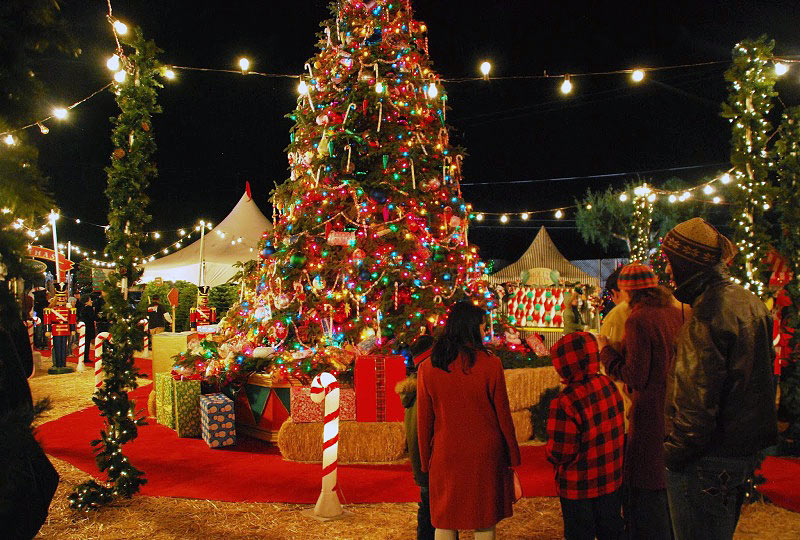
- Each year, 30-35 million real Christmas trees are sold in the United States alone. There are 21,000 Christmas tree growers in the United States, and trees usually grow for about 15 years before they are sold.
- Today, in the Greek and Russian orthodox churches, Christmas is celebrated 13 days after the 25th, which is also referred to as the Epiphany or Three Kings Day. This is the day it is believed that the three wise men finally found Jesus in the manger.
- In the Middle Ages, Christmas celebrations were rowdy and raucous — a lot like today’s Mardi Gras parties.
- From 1659 to 1681, the celebration of Christmas was outlawed in Boston, and law-breakers were fined five shillings.
- Christmas was declared a federal holiday in the United States on June 26, 1870.
- The first eggnog made in the United States was consumed in Captain John Smith’s 1607 Jamestown settlement.
- Poinsettia plants are named after Joel R. Poinsett, an American minister to Mexico, who brought the red-and-green plant from Mexico to America in 1828.
- The Salvation Army has been sending Santa Claus-clad donation collectors into the streets since the 1890s.
- Rudolph, “the most famous reindeer of all,” was the product of Robert L. May’s imagination in 1939. The copywriter wrote a poem about the reindeer to help lure customers into the Montgomery Ward department store.
- Construction workers started the Rockefeller Center Christmas tree tradition in 1931.
A Timeline of the Shocking True Story of the Modern Latke
Warning: This may be upsetting to traditionalist latke lovers.
Courtesy Gabe Friedman
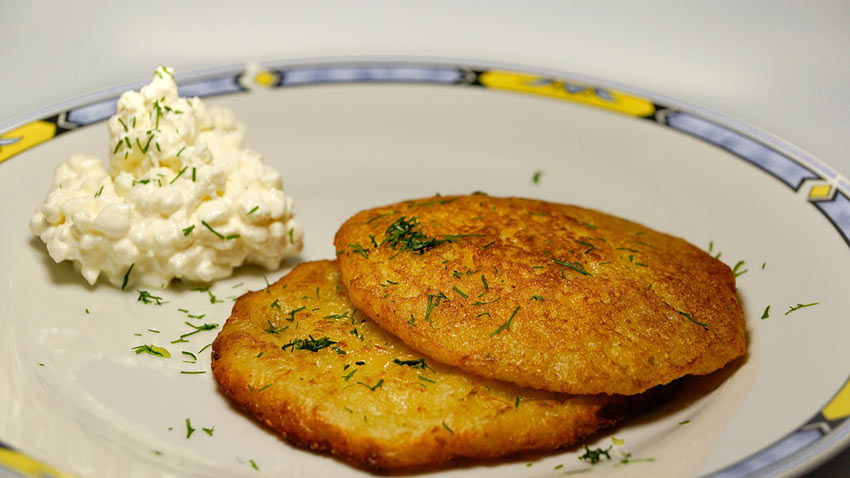
The latke is one of those Jewish foods that feels steeped in tradition, as if it’s been made the same way since the days of the Maccabees.
But in a revelatory article, Atlantic senior editor Yoni Appelbaum explains that the latke as we know it — grated potatoes fried in olive oil — is a relatively new culinary invention. Here, in brief, is the Hanukkah staple’s origin story.
As early as the 14th century: Deep-fried ricotta cheese
That’s right. Latkes were originally an Italian cheese dish.
According to Appelbaum, they were inspired by The Book of Judith, set hundreds of years before the Maccabean Revolt. The book, from the Catholic Bible, tells the story of a daring widow who seduced and killed the Assyrian general Holofernes to save Israel from invaders.
In an obscure Hebrew version of the story, Judith distracted Holofernes in part by feeding him pancakes “salted and mixed with cheese.” Italian Jews adopted the custom of deep-frying cheese pancakes on Hanukkah to honor the story, which they apparently conflated with that of the Maccabees.
Up to the 19th century: Grain pancakes
Appelbaum notes that potatoes were originally cultivated in South America and weren’t introduced to Europe by Spanish explorers until the second half of the 16th century. Potatoes weren’t widely grown and consumed in Eastern Europe — the Old World from which many Jews emigrated to the United States — for a couple more centuries.
Until the early 19th century, Eastern European Jews made pancakes from grains, such as buckwheat and rye, according to food historian Gil Marks. Those were among the few crops available to them during the frosty early winter, when Hanukkah is celebrated.
The 19th century: Potatoes fried in schmaltz, not oil
In the 1800s, even after potatoes took root in Eastern Europe, latkes were still not fried in olive oil (as they are today, providing a convenient link to the oil-rich story of Hanukkah). Olive trees were uncommon in the region, and people cooked with schmaltz, fat rendered from chickens, geese or beef.
In fact, schmaltz remained a traditional latke ingredient well into the 20th century. Appelbaum cites a stipulation from a 1927 issue of The American Mercury magazine (which he says includes the first mention of the word “latke” in English) that the potato pancakes be “fried in schmaltz.”
From the 20th century: Today’s latke — potatoes fried in oil
The advent in 1911 of Crisco, the first shortening made entirely of vegetable oil, changed the way latkes (and many other fried foods) were made. Kosher, Crisco was once marketed as the miracle for which the “Hebrew race had been waiting 4,000 years.”
When Crisco “fell from favor,” as Appelbaum writes, olive oil took its place at the Hanukkah table — and the modern latke was born.
“So what’s a latke?” asks Appelbaum.
Simple: “It’s a shredded Andean tuber, fried like a buckwheat pancake, which was substituted for Italian cheeses, once eaten to honor a mistaken reading of obscure variants of an apocryphal text.”
But it’s crispy, and delicious.
The Modern Day Chanukah Potato Latke & Recipe
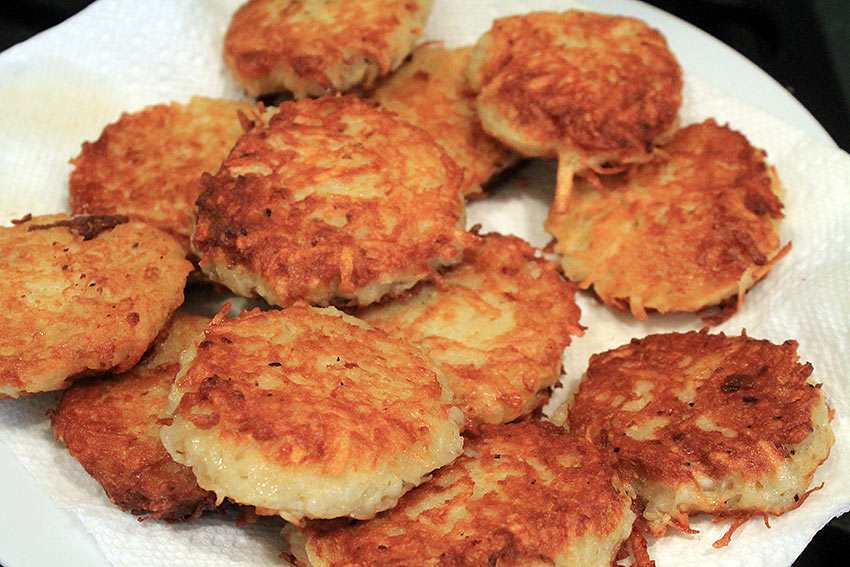
Latke (pronounced LOT-keh, LOT-kah or LOT-kee) is Yiddish for “pancake.” On Chanukah, it is traditional to serve latkes (most often potato) fried in oil to celebrate the Chanukah miracle, which involved the oil of the Temple menorah lasting for eight days instead of just one. Jews eat foods that reflect the significance of a holiday — such as matzah on Passover and apples dipped in honey on Rosh Hashanah — and Chanukah is no exception. For at least the last thousand years, Jews have traditionally eaten oily foods on Chanukah.
Why Latkes Go With Sour Cream
Potato latkes are traditionally served with applesauce and/or sour cream, but they are perfectly tasty with nothing at all In addition to being delicious with fried foods, sour cream is symbolically significant. Dairy treats are reminiscent of the milk-based (and intoxicating) meal that the brave Judith fed the Greek general before she decapitated him in his sleep.
Ingredients:
5 large potatoes, peeled
1 large onion
3 eggs
1/3 cup flour
1 tsp. Salt
¼ tsp. pepper
¾ cup oil for frying
Use: 10-inch skillet
Yields: 4 to 6 servings
Grate potatoes and onion on the fine side of a grater, or in a food processor; or put in a blender with a little water.
Strain grated potatoes and onion through a colander, pressing out excess water. Add eggs, flour, and seasoning. Mix well.
Heat ½ cup oil in skillet. Lower flame and place 1 large tablespoon batter at a time into hot sizzling oil and fry on one side for approximately 5 minutes until golden brown. Turn over and fry on other side 2 to 3 minutes.
Remove from pan and place on paper towels to drain excess oil. Continue with remaining batter until used up, adding more oil when necessary.
Serve with applesauce and/or sour cream on the side.
The 12 Days of Christmas
 The 12 Days of Christmas start on Christmas Day and last until the evening of the 5th January – also known as Twelfth Night. The 12 Days have been celebrated in Europe since before the middle ages and were a time of celebration.
The 12 Days of Christmas start on Christmas Day and last until the evening of the 5th January – also known as Twelfth Night. The 12 Days have been celebrated in Europe since before the middle ages and were a time of celebration.
The 12 Days each traditionally celebrate a feast day for a saint and/or have different celebrations:
- Day 1 (25th December): Christmas Day — celebrating the Birth of Jesus
- Day 2 (26th December also known as Boxing Day): St Stephen’s Day. He was the first Christian martyr (someone who dies for their faith). It’s also the day when the Christmas Carol ‘Good King Wenceslas‘ takes place.
- Day 3 (27th December): St John the Apostle (One of Jesus’s Disciples and friends)
- Day 4 (28th December): The Feast of the Holy Innocents — when people remember the baby boys which King Herod killed when he was trying to find and kill the Baby Jesus.
- Day 5 (29th December): St Thomas Becket. He was Archbishop of Canterbury in the 12th century and was murdered on 29th December 1170 for challenging the King’s authority over Church.
- Day 6 (30th December): St Egwin of Worcester.
- Day 7 (31st December): New Years Eve (known as Hogmanay in Scotland). Pope Sylvester I is traditionally celebrated on this day. He was one of the earliest popes (in the 4th Century). In many central and eastern European countries (including Austria, Bosnia and Herzegovina, Croatia, the Czech Republic, Germany, Hungary, Israel, Italy, Luxembourg, Poland, Slovakia, Switzerland and Slovenia) New Years Eve is still sometimes called ‘Silvester’. In the UK, New Years Eve was a traditional day for ‘games’ and sporting competitions. Archery was a very popular sport and during the middle ages it was the law that it had to be practised by all men between ages 17-60 on Sunday after Church! This was so the King had lots of very good archers ready in case he need to go to war!
- Day 8 (1st January): 1st January — Mary, the Mother of Jesus
- Day 9 (2nd January): St. Basil the Great and St. Gregory Nazianzen, two important 4th century Christians.
- Day 10 (3rd January): Feast of the Holy Name of Jesus. This remembers when Jesus was officially ‘named’ in the Jewish Temple. It’s celebrated by different churches on a wide number of different dates!
- Day 11 (4th January): St. Elizabeth Ann Seton, the first American saint, who lived in the 18th and 19th centuries. In the past it also celebrated the feast of Saint Simon Stylites (who lives on a small platform on the top of a pillar for 37 years!).
- Day 12 (5th January also known as Epiphany Eve): St. John Neumann who was the first Bishop in American. He lived in the 19th century.
The Deeper Meaning of the Chanukah Oil Miracle
The Paradoxes of Oil as a Guide for Living
Dedicated by David and Eda Schottenstein
In the loving memory of:
Rabbi Levi Yitzchok ben Zalman Yuda Deitsch and Alta Shula Swerdlov
And in honor of the birth of their daughter Yetta Alta Shula, “Aliyah”
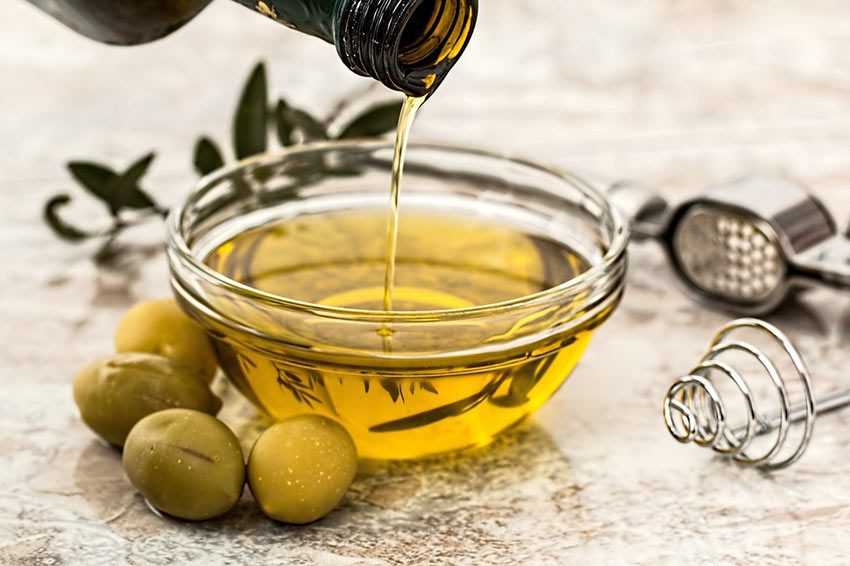
Why Celebrate Oil?
The kindling of a menorah during the eight days of Chanukah commemorates an ancient miracle that occurred in our Jerusalem Holy Temple, some 2300 years ago. Following the victory of the Jews over their Greek oppressors who desecrated the Temple and attempted to destroy Judaism, a little cruse of unsoiled olive oil found in the Temple lasted and burned for eight days, till the Jews managed to purchase new pure oil for the daily kindling of the Temple Candelabra. To commemorate this display of Divine grace in a world usually enslaved to nature, the sages of Israel instituted the eight-day holiday of Chanukah, in which we kindle a menorah each night.
In that sense, oil embodies the essence of the Chanukah narrative and serves as the main focus of the festival of lights. Indeed, in many a Jewish household, the Chanukah lamps consist of wicks dipped in olive oil, replicating the Temple Menorah lamps. Throughout the holiday we eat various foods soaked in oil, from latkes to donuts (oy, the calories).
This is strange. The miracle of the oil, it would seem, was of minor significance relative to the military victory. Besides the fact that this was a miracle that occurred behind the closed doors of the Temple with only a few priests to behold, it was an event concerning a religious symbol without any consequences on life, death and liberty. If the Jews would have been defeated by the Greeks, there would be no Jews today; if the oil would have not burnt for eight days, so what? The menorah would have not been kindled. Would the latkes taste any worse?
Why did the main focus of the Chanukah become oil?
Many insights have been offered. In this essay, we present a symbolic explanation, relating to the inner psychological universe of man. It is based on a pre-Chanukah letter penned by the Lubavitcher Rebbe in 1947.[1]
Four Qualities of Oil
Olive oil contains four interesting qualities.
A) Olive oil is produced by crushing and beating ripe olives. The olive must be severely “humbled” and pressed in order to emit its oil.
B) Olive Oil, as many other oils extracted from minerals, plants and animals, penetrates solid substances deeply. We all know how difficult it is to remove the oily grease that makes its way into our fingers or our clothes. Various oils have been used throughout history as remedies for bodily wounds and diseases, since oil penetrates the body far beyond its external tissue.
C) Oil does not mix with other liquids. When you attempt to mix, say, oil with water, the oil will remain distinct and will not dissolve in the water.
D) Not only will oil not mix and become dissolved in other liquids, rather staying in place or sinking downward, but furthermore, the oil will rise, floating atop any other liquids.
On a symbolic level, these appear as paradoxical characteristics. Is oil “humble” or “arrogant?” It is beaten badly, yet it rises to the top!
From Spiritual to Physical
In the writings of Jewish Mysticism, all physical properties of any existing object are seen as continuums of their metaphysical properties. Every object originates in the realm of the spirit, embodied by a particular sublime energy. Then the energy evolves to assume a physical reincarnation, giving rise to particular physical characteristics that mirror their spiritual source.
This, parenthetically, constitutes an extremely rich component of Judaism. From the vantage point of Torah, the truths of science, physics, chemistry, biology etc. and the truths of philosophy, spirituality and psychology are merged together in a perfect mosaic, since the physical evolves from the spiritual.
The same principle applies to oil as well. The four above-mentioned qualities displayed in oil are essentially a physical manifestation of four spiritual and psychological attributes from where oil originates. They, in turn, evolve and assume the four physical forms of expression outlined above.
Four Cardinal Principles
In our lives, we must learn how to become “oil”-like. We must learn to cultivate the four properties characterizing oil.
A) The crushing and pressing of the olives, which allows you to become oil, represents the notion of humbleness, the antithesis of arrogance and self-inflation. Seeing ourselves for who we really are, being open to discover our biases, blind spots and errors, allows us to genuinely grow.
B) The direct result of this “pressing” is your ability to become oil-like and, just like oil, penetrate others deeply. When you’re haughty and pompous (usually because of a lack of self-confidence and hence the need to create a delusional self-confidence), you are incapable of sharing yourself with others, or allowing them to share themselves with you. You hide in a bubble, afraid of being vulnerable and authentic. You can’t be in a real relationship. Only when your fake ego is crushed a little bit, either by choice or by life’s circumstances, you have the courage to show up in the world, and to show up to other people, with the real “you.” You can then connect with other people’s hearts profoundly.
C) Humility and genuine relationships must never allow you to be pulled down and completely defined by the relationships. You must never forfeit your individual identity and to dissolve in the emotions or choices of the other person. The beauty and magic of a relationship lay precisely in the fact that two distinct individuals choose to share themselves with each other. Just like oil, you know how to feel and experience another human being deeply, while still not becoming consumed and nullified by the other’s identity. Like oil, you must always retain your distinctiveness.
The holy master Rabbi Menachem Mendel of Kotzk (1787-1859) once remarked: “If I am I because you are you and you are you because I am I, I am not I and you are not you; but if I am I because I am I and you are you because you are you, then I am and you are.” Now we can begin to schmooze.
D) This threefold process of crushing yourself, bonding with others and at the same time retaining your distinctiveness – should ultimately cause you to rise—just like oil—to the top, and “float” head and shoulders above all which is around you. Realizing that you are a “Piece of the Divine,”[2] and that at every moment you are an ambassador of G-d to our world, allows you to experience yourself as invincible, wholesome and way above the gravel that you may encounter in yourself or others. This comes not from arrogance but from realizing that your core is part of the infinite. Just like oil, you, too, rise to the top.
The Talmud states,[3] “The messenger of a person is just like sender.” If G-d chose you and sent you on a mission to this world, you are G-dlike! If you can only identify that space within yourself, nobody can compare to you.
This was the deeper mystical significance of a miracle that caused oil to increase. And it is why we celebrate with focusing on oil, for this story captures the rhythm of life. For me to become a glowing menorah, casting light in me and around me, and lighting up the world, I must be oil-like: First, I must discover the art of humility and integrity; second, I must allow myself to show up in my relationships genuinely and wholesomely; third, I must retain my distinctiveness and individuality; fourth, I must always recognize that part in me which is always “on the top.”
Judaism, particularly its festival of Chanukah, comes to teach ordinary human beings how to become oil-like. If we wish to ignite a fire in our lives, we ought to take a good and deep look at the olive oil in our Menorahs
Happy Chanukah – but let’s go easy on the physical oily foods, but not on the spiritual message of oil.
Twelfth Night of Christmas
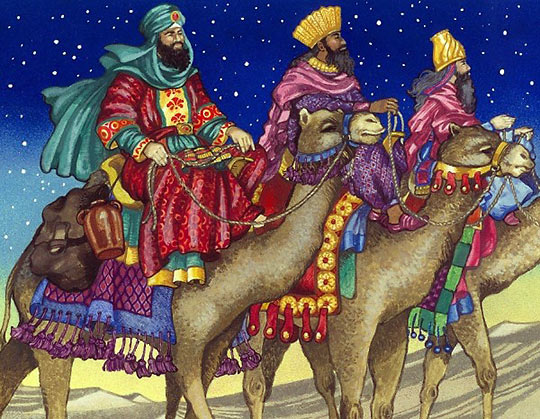 Twelfth Night was a time of great celebration with people holding large parties. During these parties, often the roles in society were reversed with the servants being served by the rich people. This dated back to medieval and Tudor times when Twelfth Night marked the end of ‘winter’ which had started on 31st October with All Hallows Eve (Halloween).
Twelfth Night was a time of great celebration with people holding large parties. During these parties, often the roles in society were reversed with the servants being served by the rich people. This dated back to medieval and Tudor times when Twelfth Night marked the end of ‘winter’ which had started on 31st October with All Hallows Eve (Halloween).
At the start of Twelfth Night the Twelfth Night cake was eaten. This was a rich cake made with eggs and butter, fruit, nuts and spices. The modern Italian Panettone is the cake we currently have that’s most like the old Twelfth Night cake.
A dried pea or bean was cooked in the cake. Whoever found it was the Lord (or Lady) of Misrule for night. The Lord of Misrule led the celebrations and was dressed like a King (or Queen). This tradition goes back to the Roman celebrations of Saturnalia. In later times, from about the Georgian period onwards, to make the Twelfth Night ‘gentile’, two tokens were put in the cake (one for a man and one for a women) and whoever found them became the the ‘King’ and ‘Queen’ of the Twelfth Night party.
In English Cathedrals during the middle ages there was the custom of the ‘Boy Bishop’ where a boy from the Cathedral or monastery school was elected as a Bishop on 6th December (St Nicholas Day) and had the authority of a Bishop (except to perform Mass) until 28th December. King Henry VIII banned the practise in 1542 although it came back briefly under Mary I in 1552 but Elizabeth I finally stopped it during her reign.
During Twelfth Night it was traditional for different types of pipes to be played, especially bagpipes. Lots of games were played including ones with eggs. These included tossing an egg between two people moving further apart during each throw — drop it and you lose and passing an egg around on spoons. Another popular game was ‘snapdragon’ where you picked raisins or other dried fruit out of a tray of flaming brandy!
The first monday after Christmas feast has finished was known as ‘Plough Monday’ as this was when farming work would all begin again!
In many parts of the UK, people also went Wassailing on Twelfth Night.
Twelfth Night is also known as Epiphany Eve. In many countries it’s traditional to put the figures of the Wise Men/Three Kings into the Nativity Scene on Epiphany Eve ready to celebrate Epiphany on the 6th January.
It’s also traditional to take your Christmas decorations down following Twelfth Night.
Twelfth Night is also the name of a famous play written by William Shakespeare. It’s thought it was written in 1601/1602 and was first performed at Candlemas in 1602, although it wasn’t published until 1623.
Would You Live in ‘The Best Airport in the World’ for a Month? This Guy Just Did!
Courtesy Ashley Rossi
Survivor meets The Truman Show. As a pretty clever marketing ploy, the Helsinki Airport invited Chinese actor and TV personality, Ryan Zhu, to live in the city’s airport for 30 days.
As noted on the campaign website, the Helsinki Airport is the most-connected airport in Northern Europe and it serves over 18 million passengers each year. It’s also been awarded the best airport in the world by Travellink. To find out if it really is the “best airport in the world,” you can follow Zhu’s journey on social media with the hashtag, #LIFEINHEL. Each of the 30 days is made into a short video, which you can find here.
From following checked luggage to experiencing a Helskini stopover, Zhu discovered the ins and outs of everything “the best airport in the world” has to offer in 30 days.
Zhu moved in on October 10 and completed the 30 days last week. He slept in a small cabin set up for him inside the airport terminal. His prize? A trip to the up-and-coming Finnish Lapland with friends and family.
This Holiday Season Pay Respects to Liz Taylor, Walt Disney at this Glitzy Graveyard to the Stars in Glendale
LA Times
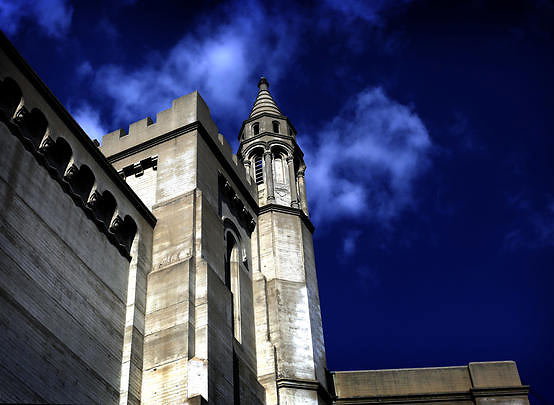
This is one of the grand cemeteries in the world — in setting, in scope, in star power. Step inside Forest Lawn Glendale and honor the memories of Elizabeth Taylor, Walt Disney and Jimmy Stewart, among dozens of other famous names.
The 300-acre cemetery dates to 1917 when Hubert Eaton took it over in hopes of celebrating eternal life. It hosts funerals, art shows and weddings. Ronald Reagan married Jane Wyman in one of its chapels.
Grab a map from the info booth as you enter the lush and hilly cemetery. Out of respect for privacy, the map will not guide you to the stars’ graves, but other resources offer maps.
From the front gate, follow signs to the wonderfully gothic Great Mausoleum, where Elizabeth Taylor is buried and honored by a giant angel at the end of the hallway. L. Frank Baum, of “Wizard of Oz,” fame is buried to the west of the Great Mausoleum, with a hefty tombstone.
Michael Jackson? He rests in a private section not open to the public.
But Jimmy and Gloria Stewart are marked by humble graves that are open to public viewing – though not easy to find.
As you face the Wee Kirk O’ the Heather chapel, they reside up the hill to your left: space 2, lot 8, small markers near the statue of a man holding an arrow.
Clustered at the Freedom Mausoleum, you’ll spot the graves of Walt Disney, Spencer Tracy, Errol Flynn, George Burns and Nat “King” Cole.
Where: 1712 S. Glendale Ave., Glendale, Calif., about 15 minutes from downtown Los Angeles, in Los Angeles County.
How much: Free
Info: Forest Lawn Glendale, (323) 254-3131
